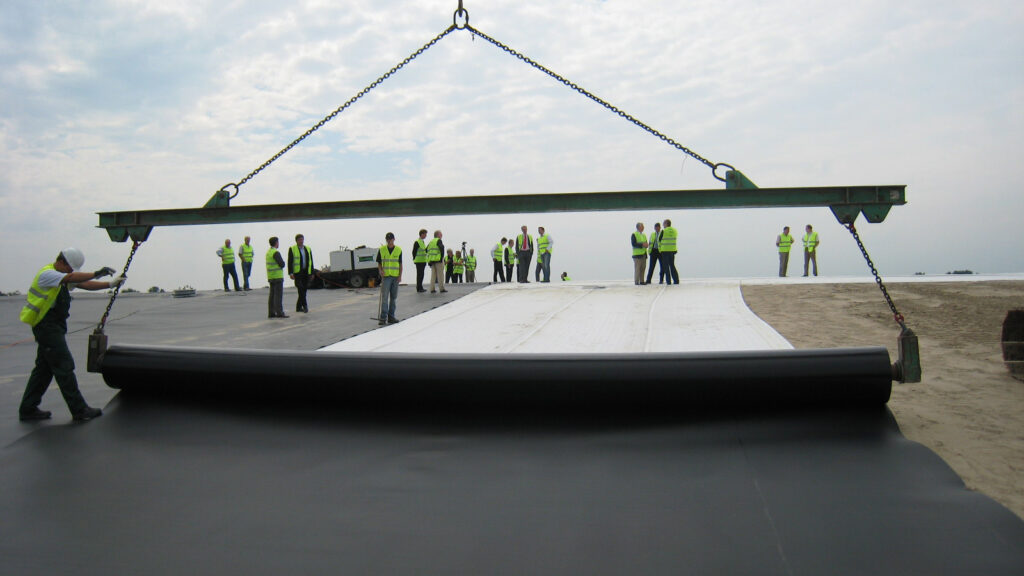Geomembranes are impermeable synthetic liners or barriers used in various civil engineering applications, including road construction. These materials are typically made from polymers such as high-density polyethylene (HDPE), low-density polyethylene (LDPE), polyvinyl chloride (PVC), and ethylene propylene diene monomer (EPDM). Geomembranes play a crucial role in road construction by providing environmental protection, improving stability, and enhancing the overall performance of road infrastructure. Here are some specific applications of geomembranes in road construction:
- Subgrade Stabilization:
- Geomembranes can be used to stabilize weak or expansive subgrade soils by preventing the ingress of water. By acting as a barrier, geomembranes help maintain the desired moisture content in the subgrade, reducing the risk of soil erosion, swelling, or shrinkage.
- Drainage Systems:
- Geomembranes are often used in combination with geosynthetic drainage materials to create efficient drainage systems beneath road surfaces. This helps in preventing water accumulation, controlling groundwater flow, and maintaining the stability of the road structure.
- Erosion Control:
- Geomembranes can be employed to control erosion along road embankments and slopes. By preventing water from infiltrating the soil and carrying away fine particles, geomembranes contribute to the long-term stability and integrity of road structures.
- Pond Liners:
- Geomembranes are used in the construction of retention ponds or stormwater management systems associated with road projects. These liners prevent water seepage into the surrounding soil, protecting against contamination and ensuring proper water management.
- Waste Containment:
- In road construction projects involving the disposal of hazardous or non-hazardous waste materials, geomembranes are used as liners for landfills. These liners create a barrier that prevents leachate migration and protects the underlying soil and groundwater from contamination.
- Bridge Abutment Protection:
- Geomembranes can be employed to protect bridge abutments and other structures from water infiltration. By creating a waterproof barrier, geomembranes help prevent damage caused by the freeze-thaw cycle and other environmental factors.
- Tunnel Construction:
- In tunnel construction, geomembranes can be used to provide waterproofing and protect against water ingress. This is particularly important in tunnels where groundwater intrusion can compromise the structural integrity of the tunnel lining.
- Reinforcement of Soft Soils:
- Geomembranes can be used in combination with geogrids or geotextiles to reinforce soft or unstable soils beneath road embankments. This reinforcement enhances the load-bearing capacity of the soil, improving the overall stability of the road.

The use of geomembranes in road construction contributes to the durability, longevity, and environmental sustainability of infrastructure projects. Engineers and construction professionals carefully design and integrate geomembrane systems to address specific site conditions and project requirements.
